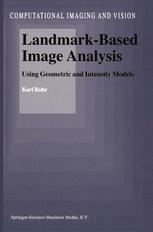

Most ebook files are in PDF format, so you can easily read them using various software such as Foxit Reader or directly on the Google Chrome browser.
Some ebook files are released by publishers in other formats such as .awz, .mobi, .epub, .fb2, etc. You may need to install specific software to read these formats on mobile/PC, such as Calibre.
Please read the tutorial at this link: https://ebookbell.com/faq
We offer FREE conversion to the popular formats you request; however, this may take some time. Therefore, right after payment, please email us, and we will try to provide the service as quickly as possible.
For some exceptional file formats or broken links (if any), please refrain from opening any disputes. Instead, email us first, and we will try to assist within a maximum of 6 hours.
EbookBell Team

4.4
102 reviewsLandmarks are preferred image features for a variety of computer vision tasks such as image mensuration, registration, camera calibration, motion analysis, 3D scene reconstruction, and object recognition. Main advantages of using landmarks are robustness w. r. t. lightning conditions and other radiometric vari ations as well as the ability to cope with large displacements in registration or motion analysis tasks. Also, landmark-based approaches are in general com putationally efficient, particularly when using point landmarks. Note, that the term landmark comprises both artificial and natural landmarks. Examples are comers or other characteristic points in video images, ground control points in aerial images, anatomical landmarks in medical images, prominent facial points used for biometric verification, markers at human joints used for motion capture in virtual reality applications, or in- and outdoor landmarks used for autonomous navigation of robots. This book covers the extraction oflandmarks from images as well as the use of these features for elastic image registration. Our emphasis is onmodel-based approaches, i. e. on the use of explicitly represented knowledge in image analy sis. We principally distinguish between geometric models describing the shape of objects (typically their contours) and intensity models, which directly repre sent the image intensities, i. e. ,the appearance of objects. Based on these classes of models we develop algorithms and methods for analyzing multimodality im ages such as traditional 20 video images or 3D medical tomographic images.